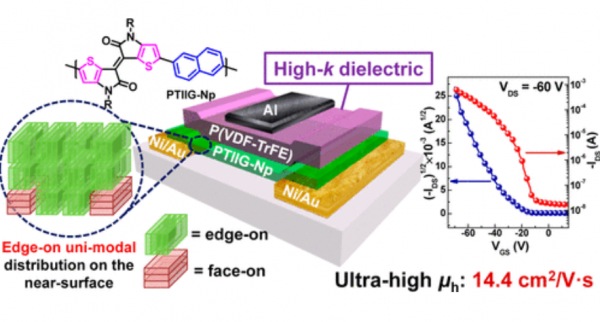A Thienoisoindigo-Naphthalene Polymer with Ultrahigh Mobility of 14.4 cm(2)/V.s That Substantially Exceeds Benchmark Values for Amorphous Silicon Semiconductors
- 저자
- Gyoungsik Kim, Seok-Ju Kang, Gitish K Dutta, Young-Kyu Han, Tae Joo Shin, Yong-Young Noh*, Changduk Yang*
- 저널명
- Journal of the American Chemical Society, 136, 26, 9477-9483 (2014)
- 년도
- 2014
- Link
- http://dx.doi.org/10.1021/ja504537v 411회 연결
[Abstract]
By considering the qualitative benefits associated with solution rheology and mechanical properties of polymer semiconductors, it is expected that polymer-based electronic devices will soon enter our daily lives as indispensable elements in a myriad of flexible and ultra low-cost flat panel displays. Despite more than a decade of research focused on designing and synthesizing state-of-the-art polymer semiconductors for improving charge transport characteristics, the current mobility values are still not sufficient for many practical applications. The confident mobility in excess of ∼10 cm2/V·s is the most important requirement for enabling the realization of the aforementioned near-future products. We report on an easily attainable donor–acceptor (D–A) polymer semiconductor: poly(thienoisoindigo-alt-naphthalene) (PTIIG-Np). An unprecedented mobility of 14.4 cm2/V·s, by using PTIIG-Np with a high-k gate dielectric poly(vinylidenefluoride-trifluoroethylene) (P(VDF-TrFE)), is achieved from a simple coating processing, which is of a magnitude that is very difficult to obtain with conventional TFTs by means of molecular engineering. This work, therefore, represents a major step toward truly viable plastic electronics.
